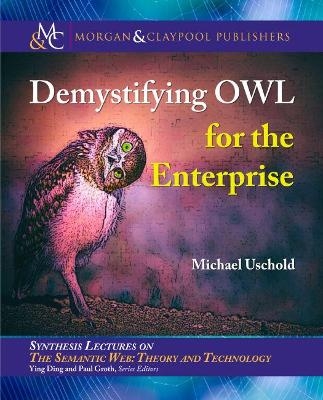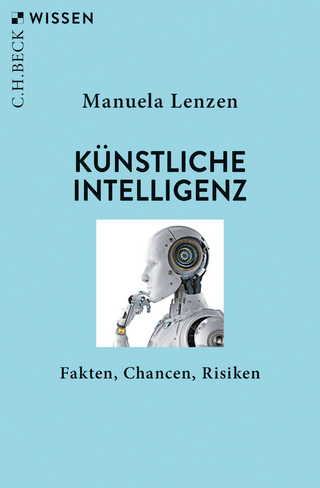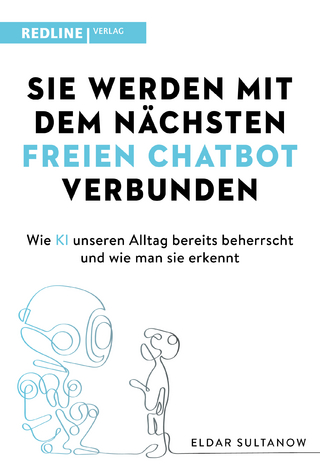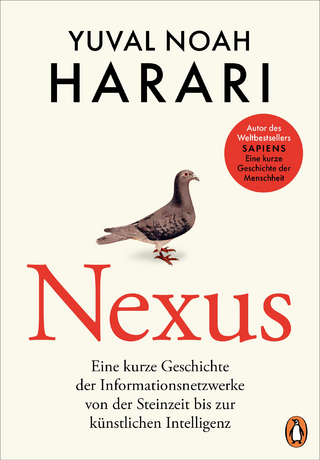
Demystifying OWL for the Enterprise
Morgan & Claypool Publishers (Verlag)
978-1-68173-127-8 (ISBN)
The purpose of this book is to speed up the processing of learning and mastering the Web Ontology Language OWL. To that end, the focus is on the 30% of OWL that gets used 90% of the time.
After a slow incubation period of nearly 15 years, a large and growing number of organizations now have one or more projects using the Semantic Web stack of technologies. The Web Ontology Language (OWL) is an essential ingredient in this stack, and the need for ontologists is increasing faster than the number and variety of available resources for learning OWL. This is especially true for the primary target audience for this book: modelers who want to build OWL ontologies for practical use in enterprise and government settings.
Others who may benefit from this book include technically oriented managers, semantic technology developers, undergraduate and post-graduate students, and finally, instructors looking for new ways to explain OWL. The book unfolds in a spiral manner, starting with the core ideas. Each subsequent cycle reinforces and expands on what has been learned in prior cycles and introduces new related ideas.
Part 1 is a cook's tour of ontology and OWL, giving an informal overview of what things need to be said to build an ontology, followed by a detailed look at how to say them in OWL. This is illustrated using a healthcare example. Part 1 concludes with an explanation of some foundational ideas about meaning and semantics to prepare the reader for subsequent chapters.
Part 2 goes into depth on properties and classes, which are the core of OWL. There are detailed descriptions of the main constructs that you are likely to need in every day modeling, including what inferences are sanctioned. Each is illustrated with real-world examples.
Part 3 explains and illustrates how to put OWL into practice, using examples in healthcare, collateral, and financial transactions. A small ontology is described for each, along with some key inferences. Key limitations of OWL are identified, along with possible workarounds. The final chapter gives a variety of practical tips and guidelines to send the reader on their way.
Michael Uschold has over 25 years of experience in developing and transitioning semantic technology from academia to industry. He pioneered the field of ontology engineering, co-authoring the first paper on the topic in 1995 that described his experiences as lead developer of the ""Enterprise Ontology."" He also co-authored the first comprehensive introduction to the emerging ontology field in 1996, a source still widely referenced to this day. Michael is a world-class mentor and trainer. He co-presented the first ontology tutorial in 1995 in London and was an invited instructor at the first Semantic Web summer school in Madrid in 2003 as well as at the Second Interdisciplinary Summer School on Ontological Analysis in Vitoria, Brazil, in 2014. He has given numerous invited talks and tutorials at industry and academic conferences on semantic technology, emphasizing practical ways to put ontologies to use. As a senior ontology consultant at Semantic Arts since October 2010, Michael trains and guides clients to better understand and leverage semantic technology. He has taught hundreds of budding ontologists about OWL in the past decade, in tutorials, open classes, and seminars held in-house in major organizations. He has built commercial enterprise ontologies in sports and entertainment, digital asset management, finance, healthcare, legal research, consumer products, electrical product specifications, manufacturing, corporation registration, and metadata management. From 2008-2009, Uschold worked at Reinvent on a team that developed a semantic advertising platform that substantially increased revenue. As a research scientist at Boeing from 1997-2008, he defined, led, and participated in numerous projects applying semantic technology to enterprise challenges. He is a frequently invited speaker and panelist at national and international events and serves on the editorial board of the Applied Ontology Journal. He received his Ph.D. in Artificial Intelligence from Edinburgh University in 1991 and his M.Sc. in Computer Science from Rutgers University in 1982.
Forward by Dave McComb
Foreword by Mark A. Musen
Preface
Acknowledgments
Part 1: Introducing OWL
Getting Started: What Do We Need to Say?
How Do We Say it in OWL?
Fundamentals: Meaning, Semantics, and Sets
Part 2: Going into Depth: Properties and Classes
Properties
Classes
Part 3: Using OWL in Practice
More Examples
OWL Limitations
Go Forth and Ontologize
Appendices
Author Biography
Index
| Erscheinungsdatum | 24.06.2018 |
|---|---|
| Reihe/Serie | Synthesis Lectures on Semantic Web: Theory and Technology |
| Mitarbeit |
Herausgeber (Serie): Ying Ding, Paul Groth |
| Verlagsort | San Rafael |
| Sprache | englisch |
| Maße | 191 x 235 mm |
| Gewicht | 525 g |
| Themenwelt | Mathematik / Informatik ► Informatik ► Datenbanken |
| Informatik ► Theorie / Studium ► Künstliche Intelligenz / Robotik | |
| Mathematik / Informatik ► Informatik ► Web / Internet | |
| ISBN-10 | 1-68173-127-4 / 1681731274 |
| ISBN-13 | 978-1-68173-127-8 / 9781681731278 |
| Zustand | Neuware |
| Haben Sie eine Frage zum Produkt? |
aus dem Bereich


